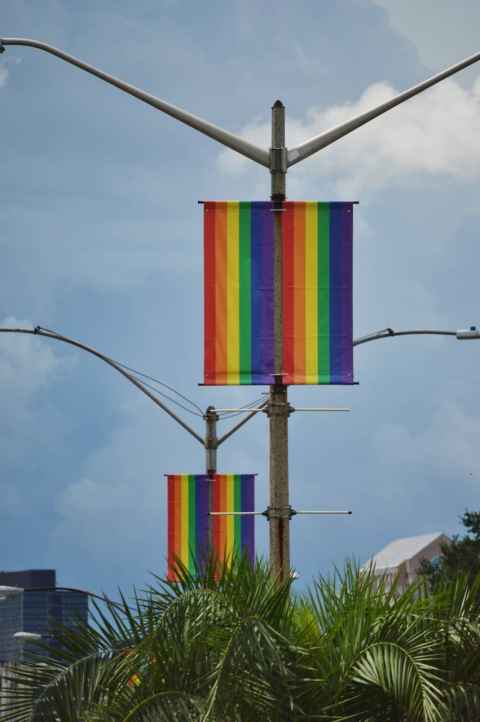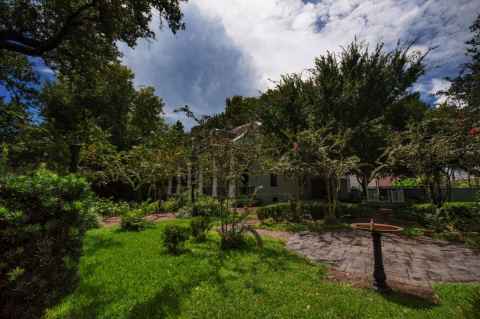Tremé
Tremé, or more formally Faubourg Tremé, is the neighborhoond bordering the French Quarter to the north-west. It was the main neighborhood for free people of color and was originally known as "Back of Town".
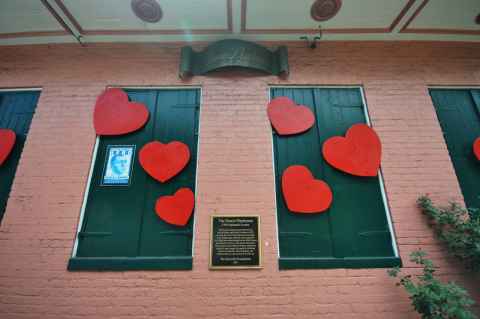
The plaque reads:
The Faerie Playhouse
1308 Esplanade Avenue
This Creole cottage became the home of Stewart Butler and Alfred Doolittle in 1979 and was the site of many organizing meetings in the lesbian, gay, bisexual and transgender civil rights movement during the late 20th Century and early 21st Century. The garden behind this home contains the cremains of many significant leaders in that struggle for equality, including Charlene Schneider, John Ognibene, and Cliff Howard, as well as artist J. B. Hartner.
The Bienville Foundation
2007
2014-09-03 12:34
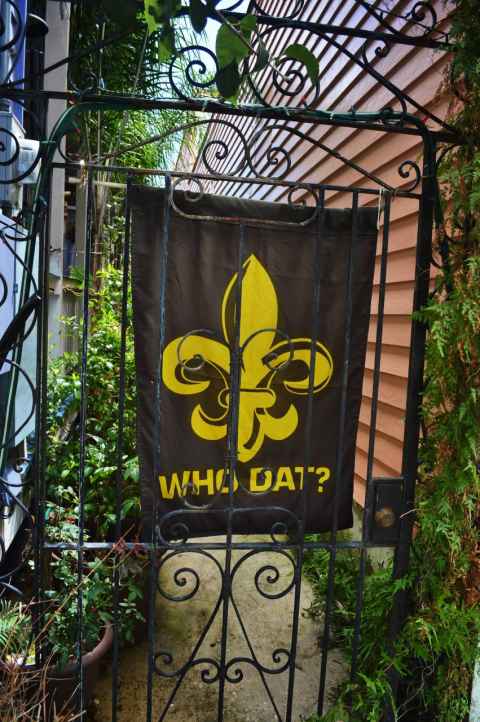
The house of a supporter of the New Orleans Saints. The supporters are known as the "Who Dat Nation", and the words are from their chant "Who dat? Who dat? Who dat say dey gonna beat dem Saints?". The chant, in turn, has its origins in the minstrel shows[a], where the joke consisted of two blacks meeting, and, not being able to see each other, would go "Who dat?" / "Who dat say 'who dat'?" / "Who dat say 'who dat say "who dat"'?" / etc. until the show moved on or overt racism went out of fashion.
2014-09-03 12:37
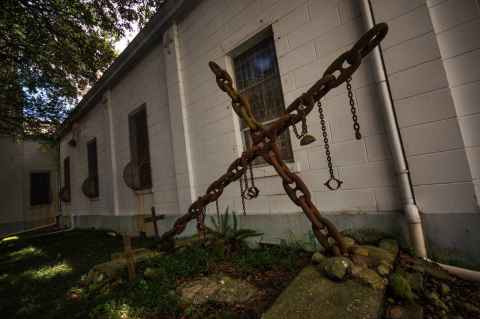
Nearby a plaque reads:
On this October 30, 2004, we, the faith community of St. Augustine Catholic Church, dedicate this shrine consisting of grave crosses, chains and shackes to the memory of the nameless, faceless [and] turfless Africans who met an untimely death in Faubourg Treme. The tomb of the unknown slave is commemorated here in this garden plot of St. Augustine church, the only parish in the United States whose free people of color bought two outer rows of pews exclusively for slaves to use for worship. This St. Augustine/Treme shrine honors all slaves in particular who lie beneath the ground of Treme in unmarked, unknown graves. There is no doubt that the campus of St. Augustine Church sits astride the blood, sweat, tears and some of the mortal remains of unknown slaves from Africa and local American Indian slaves who either met with fatal treachery, and were therefore buried quickly and secretly, or were buried hastily and at random because of yellow fever and other plagues. Even now, some Treme locals have childhood memories of salvage/restoration workers unearthing various human bones, sometimes in concentrated areas such as wells. In other words, the tomb of the unknown slave is a constant reminder that we are walking on holy ground. Thus, we cannot consecrate this tomb, because it is already consecrated by many slaves' inglorious deaths bereft of any acknowledgment, dignity or respect, but ultimately glorious by their blood, sweat, tears, faith, prayers and deep worship of our creator.
Donated by Sylvia Barker of the Danny Barker Estate
2014-09-03 12:49
